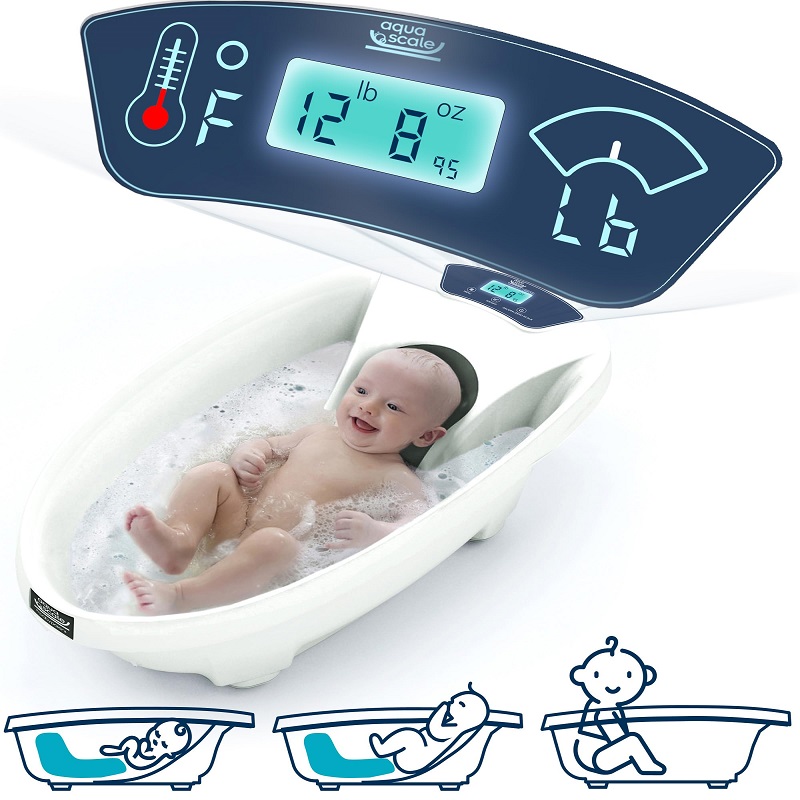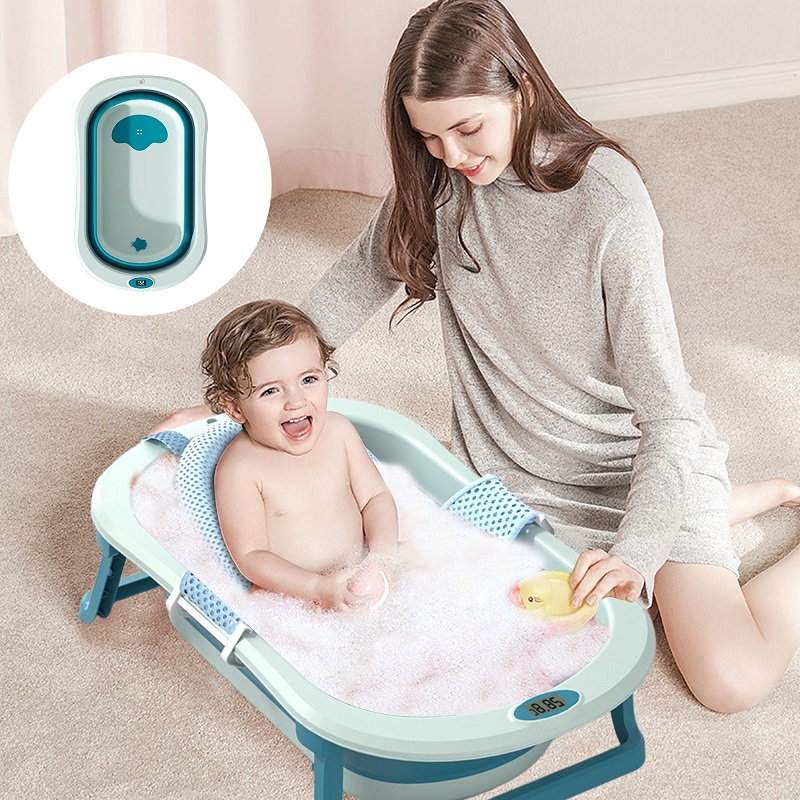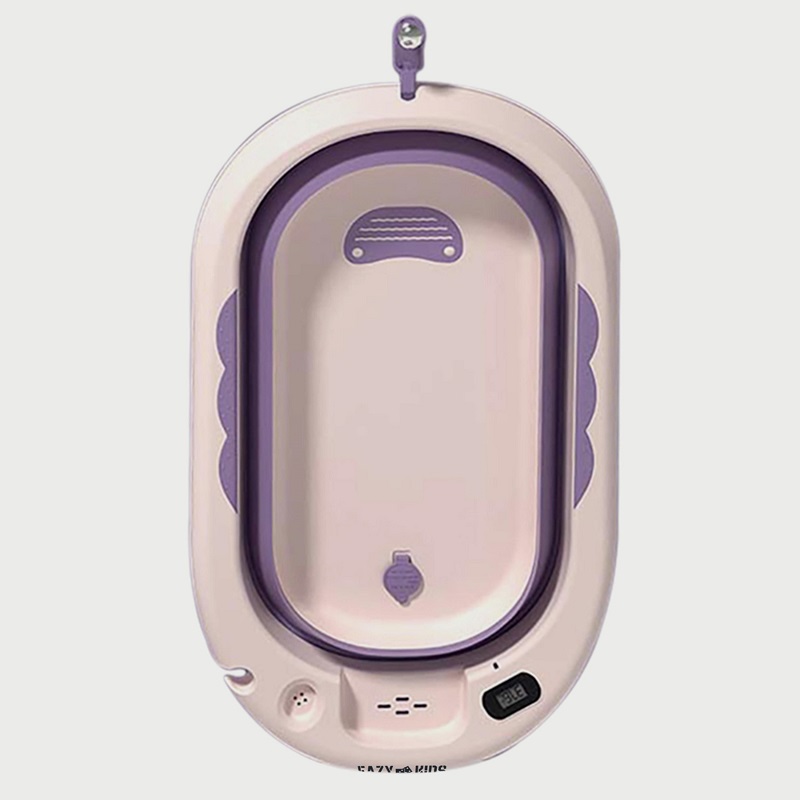Bathing a baby can be a delightful experience, but it also comes with its set of challenges, primarily concerning safety and comfort. One innovative solution that has gained popularity among parents is the baby bathtub with thermometer features. These bathtubs not only provide a safe environment for bathing, but also incorporate technology to ensure the water temperature is just right. This article delves into the various aspects of baby bathtubs equipped with thermometers, examining their benefits, features, and considerations for parents.
The Importance of Safe Bathing
Understanding Baby Bathing Needs
Bathing is an essential part of a baby’s hygiene routine, promoting cleanliness and comfort. However, the needs of a newborn or infant are unique compared to older children. Babies have delicate skin, and their bodies are more sensitive to temperature changes. As such, ensuring the right water temperature is crucial to prevent discomfort or even harm. Typically, the ideal water temperature for a baby’s bath is between 98°F to 100°F (37°C to 38°C). A bath that is too hot can lead to scalding, while water that is too cold can cause the baby to become chilled quickly.
Safety Considerations
Safety is paramount when it comes to bathing infants. Parents must always supervise their babies during bath time to prevent slips and accidents. Traditional bathtubs can be slippery and pose a risk, especially when a baby starts to wriggle. The design of baby bathtubs addresses these concerns by providing a secure space specifically for infants. Incorporating a thermometer adds another layer of safety by helping parents easily monitor the water temperature, thus ensuring that their little one is comfortable and safe during bath time.

Features of Baby Bathtubs with Thermometers
Built-in Thermometer Technology
The hallmark feature of a baby bathtub with thermometer is the integrated temperature gauge. This thermometer typically displays the water temperature in real-time, often using color-coded indicators. For instance, a green light might signify an optimal temperature, while red could indicate that the water is too hot. This visual feedback allows parents to make quick adjustments to the water temperature, ensuring that their baby enjoys a pleasant bathing experience.
Ergonomic Design
Most baby bathtubs with thermometers are designed with ergonomics in mind. They often come with a contoured shape that securely holds the baby in place, minimizing the risk of slipping. This design not only enhances safety but also makes the bathing process more comfortable for the baby. Many models are also lightweight and easy to handle, allowing parents to fill and empty the tub with ease. Additionally, some bathtubs feature a non-slip base that further prevents accidents during bath time.
Benefits of Using a Baby Bathtub with Thermometer
Enhanced Safety and Comfort
One of the most significant advantages of using a baby bathtub with a thermometer is the enhanced safety it provides. With a thermometer monitoring the water temperature, parents can rest assured that their baby is bathed in safe conditions. This technology alleviates the need for guesswork, which is especially important for new parents who may be unsure about the appropriate water temperature.
Peace of Mind for Parents
Knowing that the water is at a safe temperature allows parents to focus on enjoying the bath rather than worrying about potential risks. This peace of mind enhances the bonding experience during bath time, making it a joyful ritual rather than a stressful chore. Parents can engage in gentle play, singing, or talking to their babies without the constant anxiety of temperature checks.

Choosing the Right Baby Bathtub with Thermometer
Considerations for Purchase
When selecting a baby bathtub with a thermometer, several factors should be considered. First, think about the size and weight of the tub. Some models are more compact and travel-friendly, while others are larger and may require more storage space. Additionally, check the materials used in the bathtub’s construction. Non-toxic and BPA-free materials are essential to ensure safety and durability.
Evaluating Thermometer Accuracy
Not all thermometers are created equal. Before making a purchase, read reviews and research the accuracy of the temperature gauge. Some models offer digital readings, while others may use analog dials. Ensure that the thermometer provides reliable readings to prevent any mishaps. A bathtub that has received positive feedback for its thermometer accuracy can make a significant difference in your bathing routine.
How to Use a Baby Bathtub with Thermometer
Preparing for Bath Time
To ensure a smooth bathing experience, start by gathering all necessary items before bringing your baby to the tub. This includes towels, soap, shampoo, and toys. Fill the bathtub with water, ensuring the temperature is at the recommended range by checking the thermometer. It’s a good practice to fill the tub to a shallow depth to reduce the risk of water accidents.
Bathing Techniques
When placing your baby in the bathtub, support their head and neck for safety. Use one hand to secure your baby while the other hand washes them gently. It’s advisable to start with a soft sponge or washcloth to avoid overwhelming the baby with water. Keep the bath time engaging by using toys or singing, which can help your baby feel relaxed and comfortable.
Maintaining Your Baby Bathtub
Cleaning and Sanitizing
Regular cleaning of your baby bathtub is essential for hygiene. After each use, rinse the tub to remove soap residue and any baby products. Periodically, use a mild soap solution or a vinegar-water mixture to disinfect the surface. Avoid harsh chemicals that could linger in the tub, as babies may be sensitive to residues.
Checking Thermometer Functionality
To ensure continued safety, routinely check the thermometer’s functionality. If your bathtub has a digital thermometer, replace the batteries as needed. For analog thermometers, ensure that the gauge is not damaged or stuck. Regular maintenance guarantees that you will always have accurate readings, which is crucial for safe bathing.
Addressing Common Concerns
Baby’s Discomfort in Water
Some babies may initially express discomfort during bath time, leading to tears or fussiness. This can be due to the unfamiliar sensation of being in water. To help ease your baby into bath time, try using warm, gentle water and swaddle them in a soft washcloth initially. Gradually expose them to the water while maintaining a calm environment.
Handling Bath Time Anxiety
New parents may feel anxious about bathing their baby, especially if it’s their first experience. It’s essential to remain calm and patient. Preparing ahead of time and practicing the bathing routine can help build confidence. Remember that bath time is an opportunity for bonding, so keep the atmosphere light and enjoyable.

Conclusion: The Future of Baby Bathing
Embracing Technological Advancements
The incorporation of technology in baby bathtubs, particularly the thermometer feature, represents a significant advancement in infant care. By ensuring safe water temperatures, these bathtubs enhance both comfort and safety, allowing parents to focus on nurturing their baby. As technology continues to evolve, we can expect even more innovative solutions for baby care.
A Ritual of Bonding
Ultimately, bath time should be a cherished ritual that fosters bonding between parent and child. Baby bathtubs with thermometers facilitate this by providing a secure, enjoyable experience. By choosing the right tub and following safe bathing practices, parents can create positive memories during this essential daily routine. Embracing safe and comfortable bathing solutions ensures that both babies and parents can enjoy bath time to the fullest.
